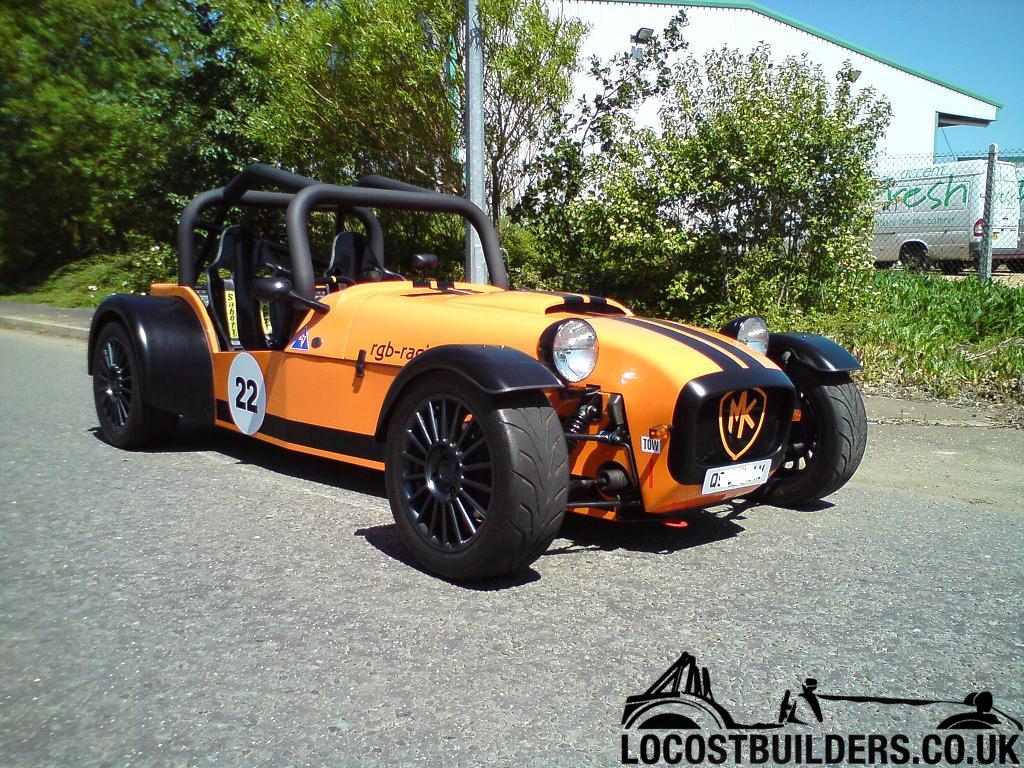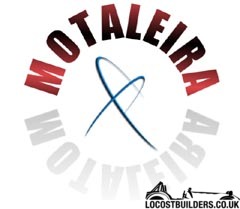matt.c
|
 posted on 12/7/08 at 07:29 PM posted on 12/7/08 at 07:29 PM |

|
|
AAARGH BRAKES!! EDIT: AAARGH AGAIN
I have a twin bias brake setup on my indy with standard sierra front and rear calipers. They are all brand new. I cant get rid of a spongy pedal! Have
bleed them with easybleed twice and on other occasions bleed them the normal way with manual effort. All the air seems to be gone but its shocking how
soft the brakes are and how crap on my test drive they were.
Can anyone help me?   
[Edited on 3/8/08 by matt.c]

|
|
|
|
|
clairetoo
|
| posted on 12/7/08 at 07:41 PM |

|
|
Sound's like your mastercylinder's a too small ?
Its cuz I is blond , innit
Claire xx
Will weld for food......
|
|
|
nitram38
|
| posted on 12/7/08 at 07:47 PM |

|
|
Make sure that your pushrods are straight when pushed in by your pedal.
Because your pedal follows an arc then the force on the pushrods travels in an arc too and can ease off.
I had to make my pushrods start off slightly at an angle and then straighten up when under pressure.
Hope that it makes sense!

|
|
|
02GF74
|
| posted on 12/7/08 at 07:57 PM |

|
|
search forum - but there are some rear calipers that are a devil to bleed - usualyl require them being taken off the car and turned upside down.
are you uses old rubber hoses or got braided hose?
is your syetm using copper tube or using braided hose through out?
for peace of mine you may want to check each caliper in tun by removing the other calipers and blocking off the line to see if any of t hen give a
prblem
|
|
|
daviep
|
| posted on 12/7/08 at 08:30 PM |

|
|
Can you see which MC is travelling furthest to try and isolate which system has a prob?
Have someone press the pedal and check each caliper is working correctly and free on the slides, if any of the calipers are sticky on the slides they
will flex and cause a spongy pedal.
Is the pedal just long and then goes hard or is it spongy and goes to the floor?
As suggested if you've got flexi's clamp them methodically to try and isolate the problem.
Keep us posted
Davie
|
|
|
daviep
|
| posted on 12/7/08 at 08:34 PM |

|
|
quote:
Originally posted by chris mason
not sure how big a difference it makes, but the correct way to bleed a twin bias set up, is by bleeding a front and rear caliper simutaneoulsy.
Chris
Can you explain why this is correct?
Cheers
Davie
|
|
|
MikeRJ
|
| posted on 12/7/08 at 08:55 PM |

|
|
quote:
Originally posted by daviep
quote:
Originally posted by chris mason
not sure how big a difference it makes, but the correct way to bleed a twin bias set up, is by bleeding a front and rear caliper simutaneoulsy.
Chris
Can you explain why this is correct?
Cheers
Davie
I would guess this only applies to manual bleeding where the bias bar would run out of articulation when bleeding a single wheel. This would only
give you a short pedal stroke in which to push the fluid through.
|
|
|
indykid
|
| posted on 13/7/08 at 12:27 AM |

|
|
now i make no assumptions on your logic or capabilities when i mention these, but they've been mentioned soooo many times before.
do your front calipers have the bleed nipples to the top? they can be fitted to the wrong sides so the bleed nipples are at the bottom.
are your rear calipers mounted with the bleed nipples to the top?
there's also some fancy bit about the handbrake lever too, lifting it up or something. a quick search should find it.
tom
|
|
|
John.Taylor
|
| posted on 13/7/08 at 09:50 AM |

|
|
I had my sierra rear calipers on the wrong sides so the nipples were down. Swapped them around and it helped but the they were still spongy so
someone suggested tapping the calipers, MC and brake light switch to 'dislodge' any air bubbles. Did this, re-bled them and they firmed
up a treat.
For the final bleed I ran a fresh carton of brake fluid through both the front and rear brakes just to be sure!
|
|
|
britishtrident
|
| posted on 13/7/08 at 10:14 AM |

|
|
Nothing brings out the old wives tales like spongey brakes ---
The most likely cause is the rear calipers are fitted with the bleed nipple below the pipe. You need to unbolt one at time turn it so the nipple is
upwards and when you crack open the nipple get somebody to give pedal two slow pumps and hold it the pedal to the floor on the last while you close
the nipple.
------------------------------------------------------------------------------------------
Bleeding Tips:
Slacken the hanbrake cable tension back before you bleed the rear brakes and aftewards don't over the tension the cable.
When bleeding balance bar setups to save time I used to jam one pushrod with a suitable bar/screwdriver while bleed the other circuit.
If using an easy bleed get somebody to give the pedal at least one pump while it is connected this helps get air out the master cylinder.
------------------------------------------------------------------------------------------
It is very unlikely be seized caliper as you are using Sierra floating calipers ----- only on opposed piston calipers such as the Cortina type will
a seized piston cause a spongey pedal.
Type of pipe work and flexible hoses has virtually no noticeable effect [i/] on how spongey your pedal is.
[I] “ What use our work, Bennet, if we cannot care for those we love? .”
― From BBC TV/Amazon's Ripper Street.
[/I]
|
|
|
Ian D
|
| posted on 13/7/08 at 11:07 AM |

|
|
Try leaving the system under pressure for a couple of days. This has the benefit of forcing the air bubles out.
Ian
|
|
|
matt.c
|
| posted on 13/7/08 at 09:20 PM |

|
|
Many thanks for the replies guys. I will try a few of your tips at the weekend. 

|
|
|
daviep
|
| posted on 17/7/08 at 03:03 PM |

|
|
quote:
Originally posted by britishtrident
------------------------------------------------------------------------------------------
It is very unlikely be seized caliper as you are using Sierra floating calipers ----- only on opposed piston calipers such as the Cortina type will
a seized piston cause a spongey pedal.
What a load of rubbish, whats the difference, you still need something on the opposite side of the disc for the piston to push against?
If the slides sieze on a floating caliper the clearance on the non piston pad may not be taken up and the caliper bracket or disc will flex until the
pad makes contact. This flexing is what gives the spongy pedal.
I'm not saying this definately is the problem only trying to offer ideas.
Cheers Davie
|
|
|
britishtrident
|
| posted on 17/7/08 at 07:51 PM |

|
|
quote:
Originally posted by daviep
quote:
Originally posted by britishtrident
------------------------------------------------------------------------------------------
It is very unlikely be seized caliper as you are using Sierra floating calipers ----- only on opposed piston calipers such as the Cortina type will
a seized piston cause a spongey pedal.
What a load of rubbish, whats the difference, you still need something on the opposite side of the disc for the piston to push against?
If the slides sieze on a floating caliper the clearance on the non piston pad may not be taken up and the caliper bracket or disc will flex until the
pad makes contact. This flexing is what gives the spongy pedal.
I'm not saying this definately is the problem only trying to offer ideas.
Cheers Davie
Sierra caliper slide pins simply don't seize, if anything they rattle about too much.
In contrast Girling P16 and M16 calipers have been notorious for either the piston or the pad seizing in the caliper since they were new especial
after the piston is pushed back to fit new pads.
|
|
|
matt.c
|
| posted on 3/8/08 at 04:45 PM |

|
|
I think the problem is air in the rear brakes. Took the rear calipers of and held them as high as possible and bleed them to find loads of air in them
but DISASTER I forgot to place something in the caliper to stop it coming out to far and now it wont go back on over the pads. I forgot to place something in the caliper to stop it coming out to far and now it wont go back on over the pads.  Looked at the
manual on how to get the caliper piston back and it says to turn it anti clockwise but when i do this nothing really happens and the piston doesnt go
back. The calipers are new and not rusty. Anyone got any idea's? Have i fecked the caliper? Looked at the
manual on how to get the caliper piston back and it says to turn it anti clockwise but when i do this nothing really happens and the piston doesnt go
back. The calipers are new and not rusty. Anyone got any idea's? Have i fecked the caliper?
Please help me locosters. 

|
|
|
bob
|
| posted on 3/8/08 at 05:32 PM |

|
|
a tool is available to push the caliper back as it turns the piston, also fits some rover cars, as well as turning the piston it has to be pushed
quiet hard to push back.
I had big problems too trying to get the air out of the rear calipers, i ended up unbolting the rear calipers and rolling them round the disc till the
bleed nipple was at its highest point. This sorted the problem, had no issues since. 
|
|
|
martyn_16v
|
| posted on 3/8/08 at 07:21 PM |

|
|
As mentioned you need to apply some pressure as you turn to get them to go back in. If you're like me and too tight to buy the proper tool you
can use an angle grinder spanner and a g-clamp to do it. Don't apply too much pressure with the g-clamp though otherwise it'll be a sod of
a job, just nip it up and then a little bit, and turn, and repeat...
|
|
|
NS Dev
|
| posted on 3/8/08 at 09:33 PM |

|
|
as above, never had proper tool, and done hundreds of em.
needle nose pliers or angle grinder "pin spanner" will do the trick, with new ones no need even for the clamp, just push the piston in
while turning clockwise with the spanner or tips of the pliers.
Retro RWD is the way forward...........automotive fabrication, car restoration, sheetmetal work, engine conversion
retro car restoration and tuning
|
|
|













